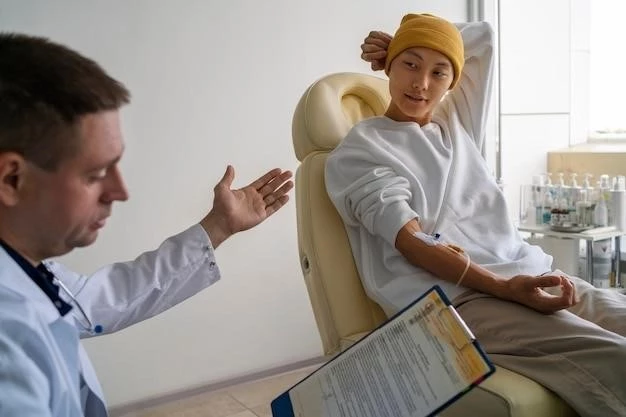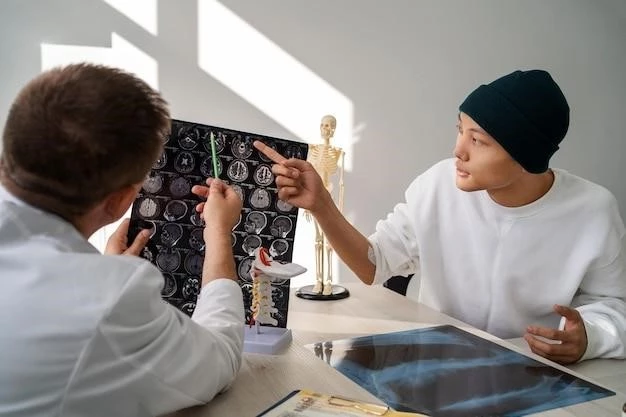Disease ⎯ Epiphyseal Dysplasia Dysmorphism Camptodactyly
Epiphyseal dysplasia dysmorphism camptodactyly is a rare genetic disorder characterized by skeletal abnormalities, joint contractures, growth delay, and limb deformities. Genetic testing, orthopedic consultation, physical therapy, and various treatment options play a crucial role in managing this condition.
Overview of Epiphyseal Dysplasia Dysmorphism Camptodactyly
Epiphyseal dysplasia dysmorphism camptodactyly is a rare genetic disorder caused by a genetic mutation. It primarily affects the skeletal system, leading to various abnormalities such as bone deformities, hand deformities, and limb abnormalities. Patients with this condition may experience joint contractures, growth delays, and other musculoskeletal issues.
Individuals with epiphyseal dysplasia dysmorphism camptodactyly often require early intervention and multidisciplinary care. Diagnosis is typically made through genetic testing and clinical evaluations. Once diagnosed, patients may benefit from an orthopedic consultation to assess the skeletal abnormalities and develop a personalized treatment plan.
Treatment options for epiphyseal dysplasia dysmorphism camptodactyly may include physical therapy to improve joint mobility and strength, orthopedic interventions to address specific deformities, and ongoing monitoring to track growth patterns and address any emerging complications.
Living with this rare disease can present challenges, but with appropriate medical management and support, individuals with epiphyseal dysplasia dysmorphism camptodactyly can lead fulfilling lives. Research efforts continue to enhance our understanding of the condition and explore potential future treatment strategies to improve outcomes for affected individuals.
Symptoms and Manifestations
Epiphyseal dysplasia dysmorphism camptodactyly presents a range of symptoms and manifestations related to skeletal abnormalities and joint issues. Common symptoms include bone deformities, hand deformities, and limb abnormalities, which can affect both the upper and lower extremities.
Individuals with this condition may experience joint contractures, limiting the range of motion in affected joints. Growth delay is also a characteristic feature, leading to shorter stature compared to peers. These symptoms can vary in severity among patients, with some individuals experiencing more pronounced skeletal abnormalities than others.
Hand deformities such as camptodactyly, where the fingers are permanently bent or curved, are often seen in individuals with this disorder. Additionally, limb abnormalities such as bowing of the long bones or abnormal curvature of the spine may be present, contributing to the overall musculoskeletal issues associated with epiphyseal dysplasia dysmorphism camptodactyly.
Early recognition of these symptoms is essential for prompt diagnosis and intervention. Patients and caregivers should be vigilant for signs of skeletal abnormalities, joint stiffness, and growth delays, seeking medical attention for further evaluation. A comprehensive assessment by healthcare professionals, including genetic testing and orthopedic consultations, can help confirm the diagnosis and guide appropriate management strategies.
Diagnosis and Evaluation
Diagnosing epiphyseal dysplasia dysmorphism camptodactyly involves a comprehensive evaluation that may include genetic testing, clinical assessments, and imaging studies. Genetic testing is crucial in identifying the specific genetic mutation responsible for the disorder, providing valuable insights into the underlying cause.
Clinical evaluations focus on assessing the skeletal abnormalities, joint contractures, growth delay, and other physical manifestations of the condition. Healthcare providers may conduct a detailed physical examination to identify characteristic features such as bone deformities, hand deformities, and limb abnormalities.
Imaging studies, including X-rays and bone scans, can help visualize the skeletal deformities and evaluate the extent of bone involvement. These diagnostic tools assist in confirming the diagnosis and determining the severity of the musculoskeletal abnormalities associated with epiphyseal dysplasia dysmorphism camptodactyly.
Additionally, patients may undergo orthopedic consultations to further evaluate the skeletal issues and develop a personalized treatment plan. Collaboration between geneticists, orthopedic specialists, and other healthcare professionals is essential in providing comprehensive care for individuals with this rare genetic condition.
Early and accurate diagnosis of epiphyseal dysplasia dysmorphism camptodactyly is critical for initiating timely interventions and improving long-term outcomes for affected individuals. Continued monitoring and follow-up evaluations are important to track disease progression, address any complications, and adjust treatment strategies as needed.
Treatment Options
Treatment of epiphyseal dysplasia dysmorphism camptodactyly aims to address the complex musculoskeletal issues associated with the condition. Management strategies may involve a multidisciplinary approach, including orthopedic interventions, physical therapy, and ongoing monitoring.
Orthopedic interventions play a crucial role in managing skeletal abnormalities and deformities. Surgical procedures may be required to correct bone deformities, address joint contractures, or improve limb alignment. Orthopedic specialists work closely with patients to tailor treatment plans to their individual needs.
Physical therapy is essential for individuals with epiphyseal dysplasia dysmorphism camptodactyly to improve joint mobility, strengthen muscles, and enhance overall physical function. Therapists design customized exercise programs to address specific limitations and optimize functional abilities.
Other treatment options may include assistive devices such as orthotic supports or braces to help stabilize joints and improve mobility. These devices can aid in daily activities and reduce the risk of complications associated with joint contractures or skeletal abnormalities.
Regular follow-up visits with healthcare providers are important to monitor disease progression, track growth patterns, and address any emerging issues promptly. Genetic counseling may also be recommended for individuals and families to understand the genetic implications of the condition and make informed decisions.
By combining various treatment modalities and providing comprehensive care, healthcare professionals can assist individuals with epiphyseal dysplasia dysmorphism camptodactyly in optimizing their quality of life, managing symptoms, and promoting physical well-being. Ongoing research and advancements in treatment approaches continue to enhance the care and outcomes for individuals affected by this rare genetic disorder.
Living with Epiphyseal Dysplasia Dysmorphism Camptodactyly
Individuals diagnosed with epiphyseal dysplasia dysmorphism camptodactyly may face unique challenges in daily living due to the skeletal abnormalities and joint issues associated with the condition. Adaptations and modifications in various aspects of life can help improve quality of life and promote independence.
Physical limitations resulting from bone deformities, hand deformities, and limb abnormalities may impact mobility and dexterity. Utilizing assistive devices such as canes, walkers, or ergonomic tools can assist individuals in performing daily tasks and maintaining functional independence.
Emotional and psychological support are essential components of holistic care for individuals living with epiphyseal dysplasia dysmorphism camptodactyly. Counseling services, support groups, and connections with others facing similar challenges can provide valuable emotional support and coping strategies.
Educational and vocational assistance may be beneficial for individuals managing this rare genetic disorder, ensuring access to resources and accommodations that support academic or professional pursuits. Creating a supportive environment that fosters inclusion and understanding is key to promoting overall well-being.
Regular communication with healthcare providers, adherence to treatment plans, and active participation in therapy sessions are important aspects of managing the condition effectively. Monitoring symptoms, tracking progress, and addressing concerns promptly can help prevent complications and optimize outcomes.
By maintaining a proactive approach to healthcare, seeking support from healthcare professionals and support networks, and staying informed about the latest advancements in treatment and research, individuals living with epiphyseal dysplasia dysmorphism camptodactyly can enhance their quality of life and navigate the challenges of the condition with resilience and determination.
Research and Future Perspectives
Research efforts in the field of epiphyseal dysplasia dysmorphism camptodactyly continue to expand our understanding of the genetic causes, pathophysiology, and treatment options for this rare disease. Genetic studies aim to identify new genetic mutations associated with the condition and improve diagnostic capabilities.
Ongoing research focuses on developing targeted therapies to address the skeletal abnormalities, joint contractures, and growth delay observed in individuals with epiphyseal dysplasia dysmorphism camptodactyly. Novel treatment modalities, including gene therapies and regenerative medicine approaches, hold promise for improving outcomes and quality of life for affected individuals.
Clinical trials play a crucial role in evaluating new interventions, assessing their safety and efficacy, and guiding future treatment strategies for individuals with this rare genetic disorder. Collaboration between researchers, healthcare providers, and patient advocacy groups is essential in advancing knowledge and improving care for those affected by the condition.

Future perspectives in the management of epiphyseal dysplasia dysmorphism camptodactyly include a personalized medicine approach tailored to each individual’s unique genetic profile and clinical presentation. Precision medicine initiatives aim to deliver targeted therapies that address the specific underlying causes of the disease and optimize treatment outcomes.
Continued investment in research, education, and awareness is essential to furthering our knowledge of epiphyseal dysplasia dysmorphism camptodactyly and enhancing the care available to individuals living with this rare genetic disorder. By fostering collaboration and innovation, we can pave the way for a brighter future for those affected by this challenging condition.
